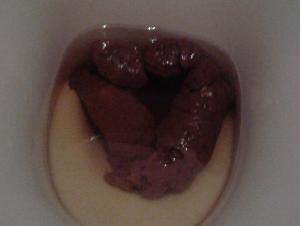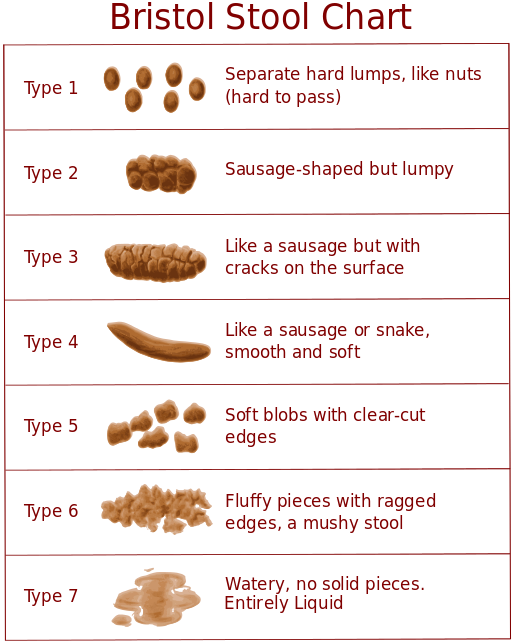
Description
The word faeces comes from the Latin meaning "dregs”. Faeces are solid particle combinations of food residue, bacteria, and mucus. Human faecal matter varies significantly in appearance, depending on diet and health.
Normally it is semi-solid, with a mucus coating. Average weight of healthy adult faeces is 100-200 grams daily. Of this, 65% will be water and 35% dry matter.
Function
After eaten material has been digested, the remains of that material are expelled from the body as waste.
Colour
The normal brown colouration comes from a combination of bile, and bilirubin that comes from dead red blood cells. When ill the colour can vary from yellow, green or black.
Shape
Like small tubes of mud. It can be hard, soft, tarry, or liquid.
The Bristol Stool Form Guide itemises seven different types of feces.
The word faeces comes from the Latin meaning "dregs”. Faeces are solid particle combinations of food residue, bacteria, and mucus. Human faecal matter varies significantly in appearance, depending on diet and health.
Normally it is semi-solid, with a mucus coating. Average weight of healthy adult faeces is 100-200 grams daily. Of this, 65% will be water and 35% dry matter.
Function
After eaten material has been digested, the remains of that material are expelled from the body as waste.
Colour
The normal brown colouration comes from a combination of bile, and bilirubin that comes from dead red blood cells. When ill the colour can vary from yellow, green or black.
Shape
Like small tubes of mud. It can be hard, soft, tarry, or liquid.
The Bristol Stool Form Guide itemises seven different types of feces.
Location
Solid matter excreted through the rectum and anus.
Solid matter excreted through the rectum and anus.

 RSS Feed
RSS Feed
